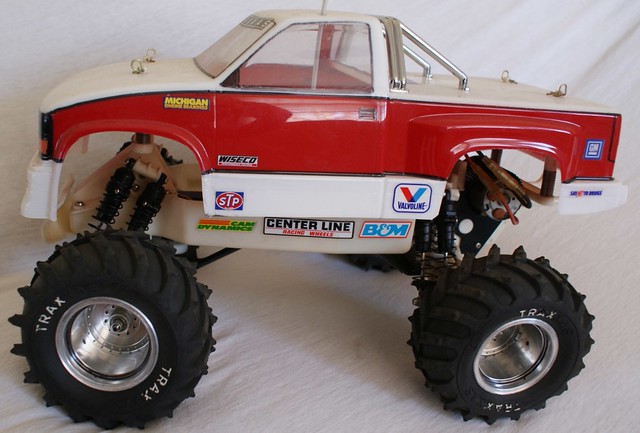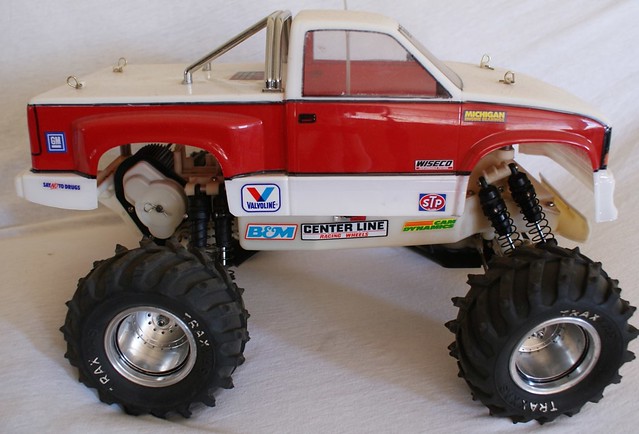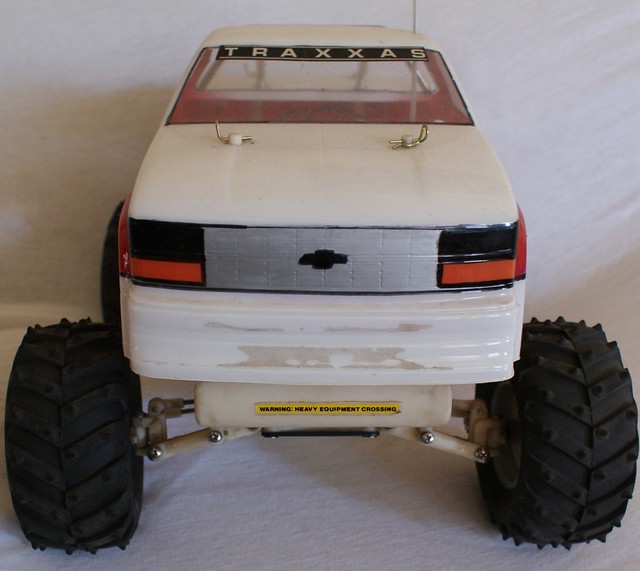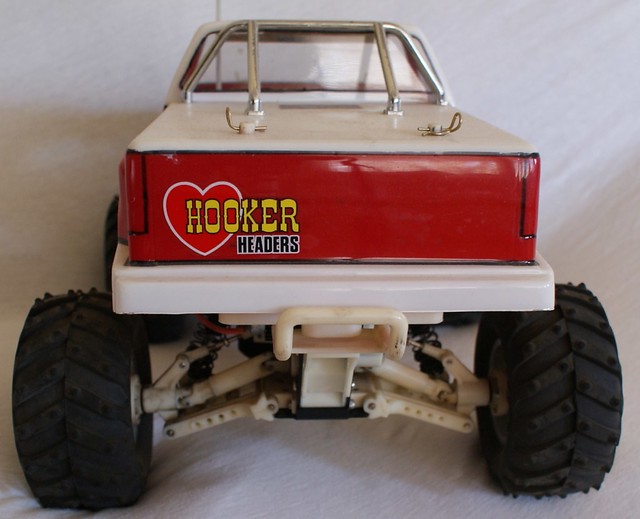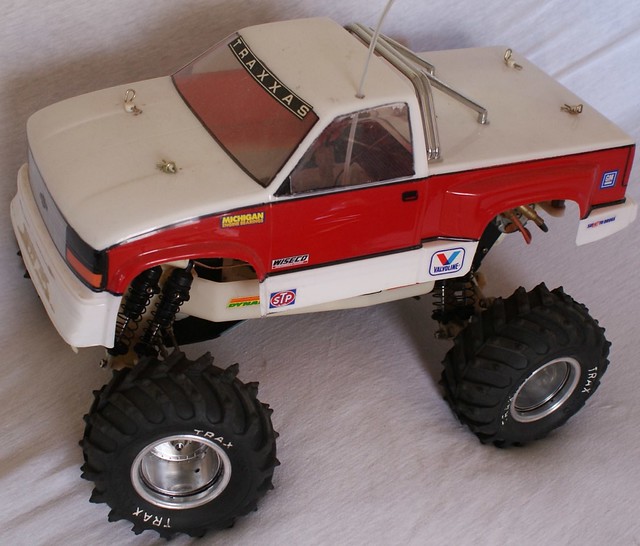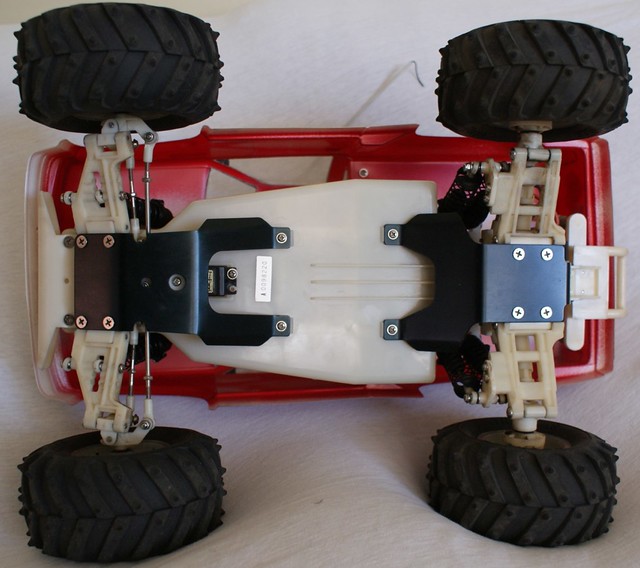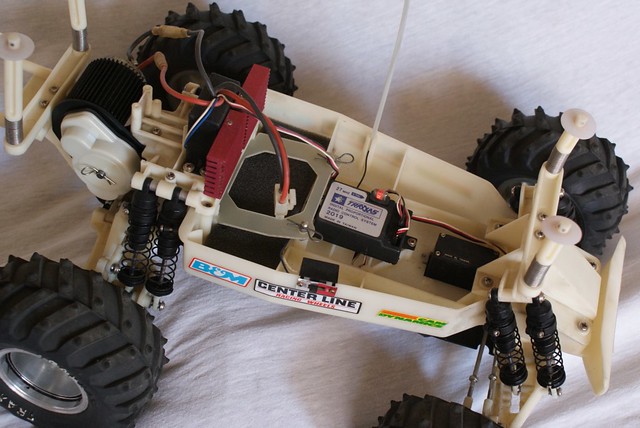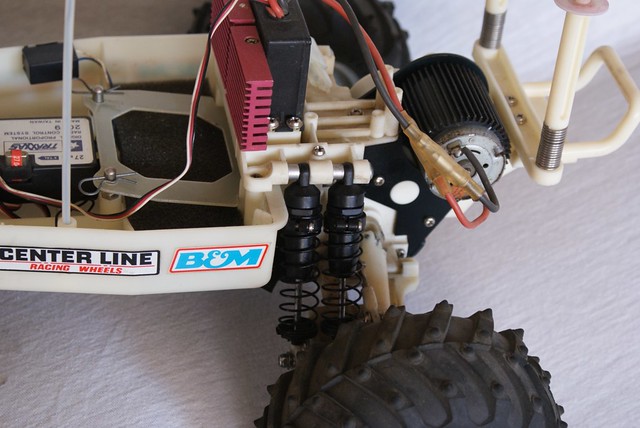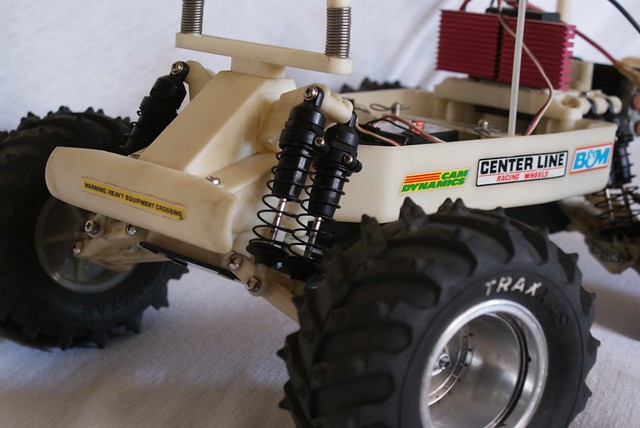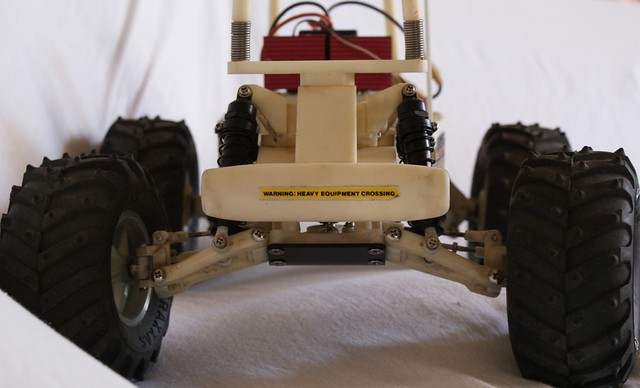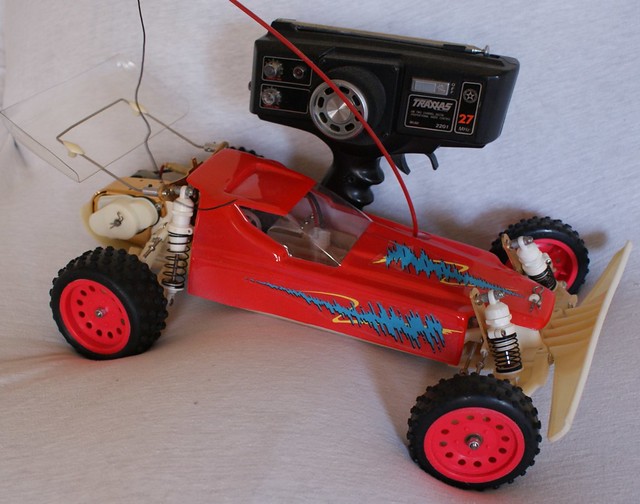
In part two of my series covering 1989, Traxxas brings its next evolution in racing buggy to market- the Radicator. The Radicator had its share of shortcomings and its success was destined to be limited by the infamous RC-10. Much like the bullet, the design was overly bulky and awkward, the transmission was loud and unreliable, the plastics were (yet again) brittle and prone to breakage and the performance was at best, underwhelming. Many of the parts on the Radicator would (for better or worse) be shared with future models and it too was available in several flavors as the years passed. Plastics went from white to black, aluminum changed colors and disappeared altogether (replaced by plastic) but all the parts remained interchangeable.
The Radicator was powered by a single brushed can motor with lackluster power and a manual speed control (3 step) or the electronic speed controller used previously, the XL-1. Introduced around the same time as the Radicator was a new version of the XL-1, deemed the XL-2. The XL-2 was marketed to racers, as it was a forward and brake only ESC. Reverse was not allowed in many races at the time, a rule which remains in place today. That being the case, the XL-2 left out the reversing circuitry and allowed hotter motors to be used without endangering the electronics. Ultimately many people would purchase the graphite Eagle chassis (a vehicle Traxxas later released) which greatly increased the durability and performance of the Radicator. Graphite and aluminum shock towers were made available as well as a ball differential and other performance options. Part of the reason for increased parts availability was due to the "sister" vehicle of the Radicator which will be covered in the final vehicle of the 1989 series- The Traxxas Hawk. The Radicator and the Hawk shared many parts. The Hawk was basically a truck version fo the Radicator and the sharing of parts made offering multiple options and upgrades more feasible due to the larger market saturation of compatible vehicles.
My Radicator is one of the few in my collection which is missing the box. It is in mint condition however- it appears as if it has never been run. It is the white plastic/gold shock version and it's one of my favorite. The hot pink paint job matches the wheels and fits with the florescent color craze of the time in the states.


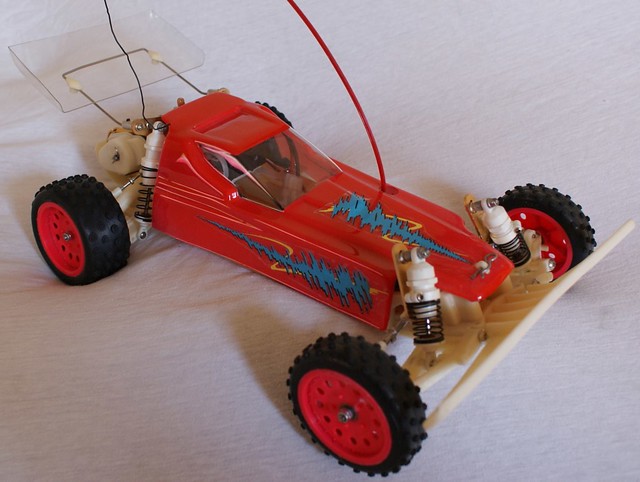
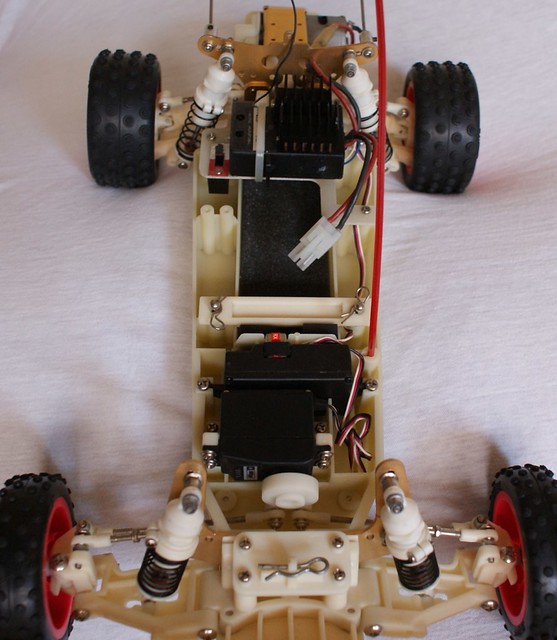


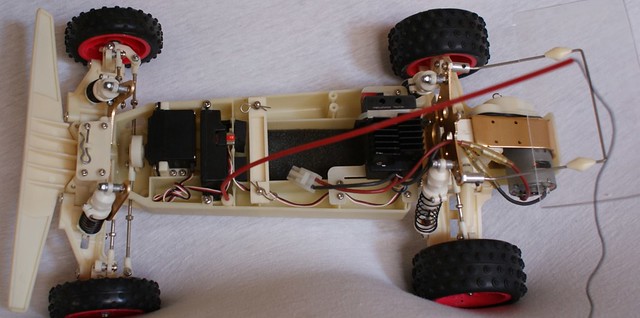
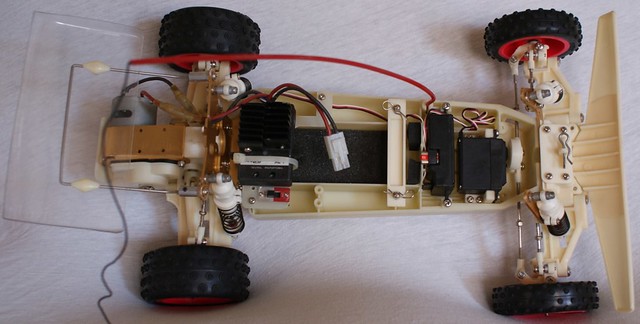
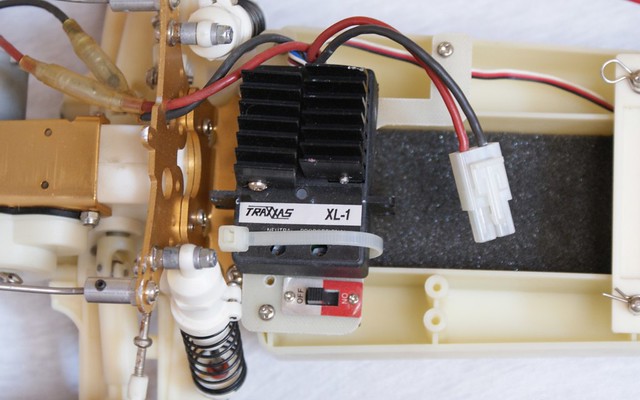
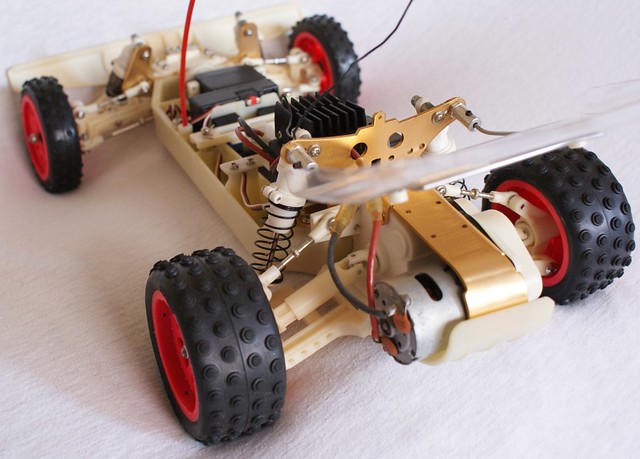




Up next: Part three of the series covering 1989 is the Villian IV! Traxxas' first shot at tearing up the lake. Look for it in the coming weeks.
